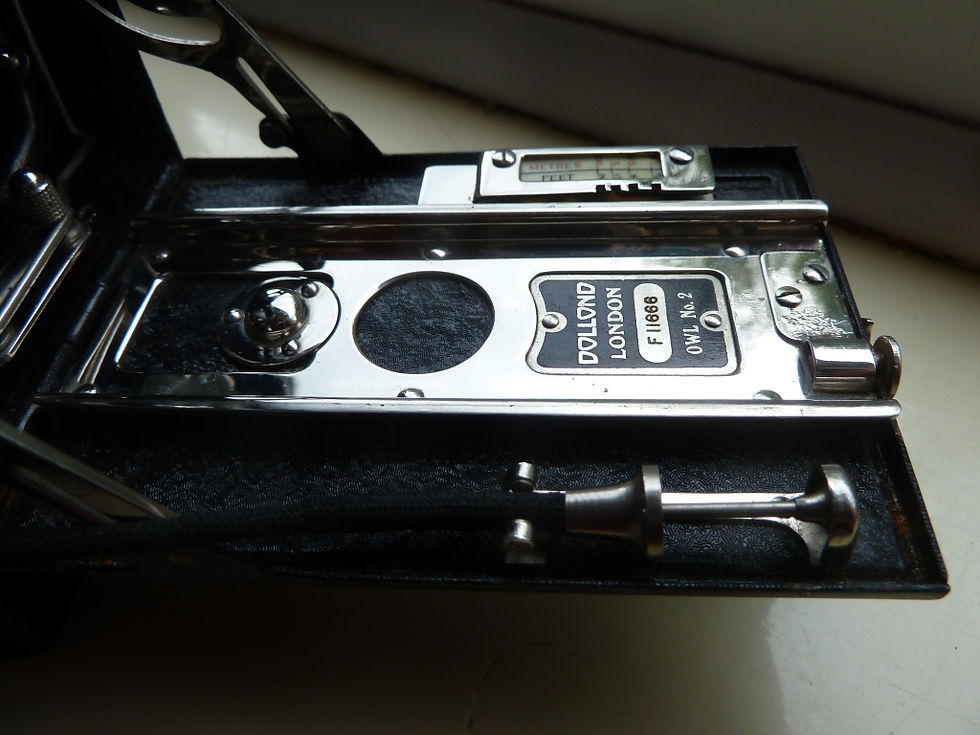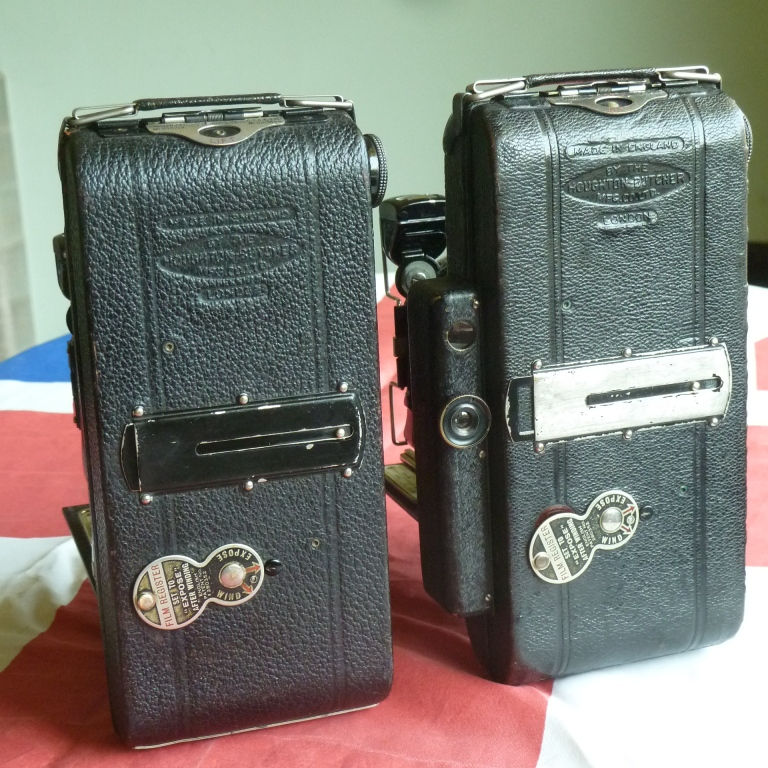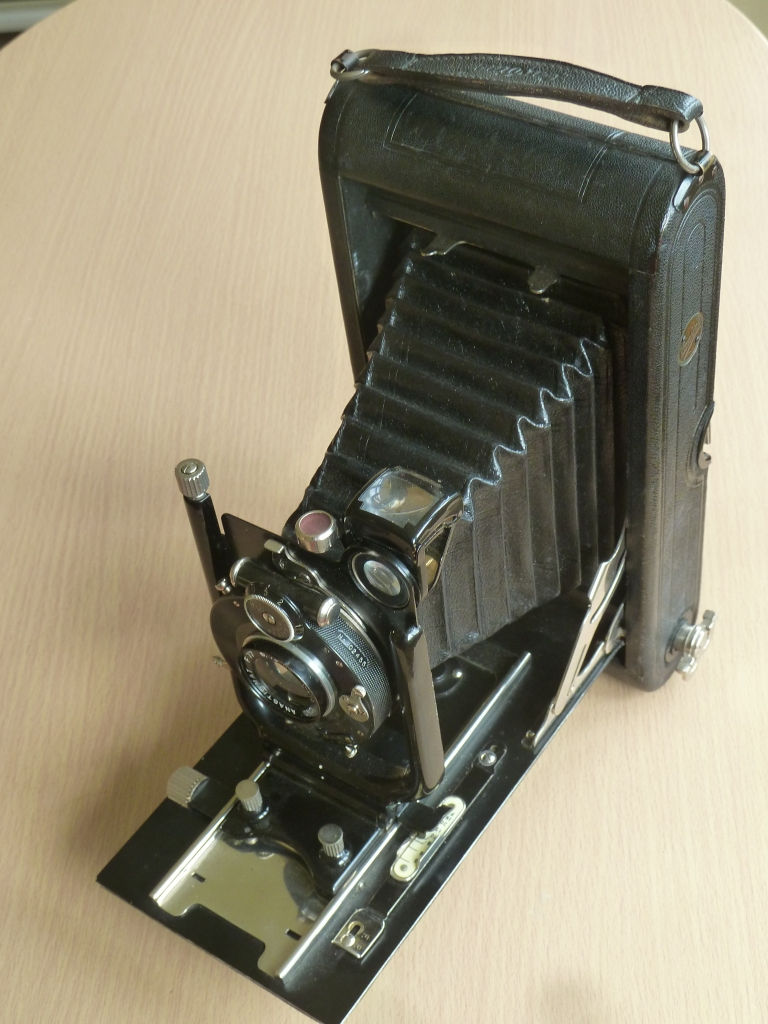Dollond of London, Owl No 2 Folding Camera from the late 1920's
- Kamera Ostalgie

- Sep 7
- 7 min read
Updated: Sep 24

I have been collecting and using old cameras since I was at school, but until recently I knew very little about Dollond Owl Cameras. In fact I have been researching Dollond Cameras since July, really searching for cameras and information and I still know very little! But I'll tell you what I have found out, as it is rather interesting.

Dolland? I bet you vaguely recognise the name, but can't think of the connection photographically speaking. I couldn't either at first, then the penny finally dropped. Dollond were a London based opticians founded in around 1750, they were a Son and Farther combination, their claim to fame being they made Telescopes and supplied them to Captain Cook and Lord Nelson, among other notables of the time, so with that customer base they must have been at the top of their game.

Let us jump forward in time to the 1920's, Dollond were still in business but maybe more as an opticians in the modern understanding of the term and wanted to sell cameras in their shops. This may sound odd, but it's not really, before the advent of the photographic store or camera shop the place to purchase photographic equipment, cameras, plates, film and chemicals was your local Chemists or Opticians so Dollond were no different here. Many of the wooden field cameras like the ones covered in my last post were fitted with little Ivory plaques with the retailers name on them, like they were the makers, most of these retailers were Drug Stores, Chemists or Opticians. So it was in effect common practise at that time.

So who did Dollond approach to produce cameras for them, well you have probably guessed it, Houghton Butcher of course! London based, local, well known for quality cameras, and with the manufacturing capability to be able to do it. Makes total sense.

The Dollond trade mark was a drawing of an Owl, hence the name used for the cameras. When Dollond merged with Aitchison in 1927 the Owl carried on and so did the cameras.

Right, enough social and economic history, this is a camera blog, lets have a look at the Owl No 2, see what we have got!

The camera weighs in at 602g, that's 1 1/2lbs in the weight of its time, about 6 1/2 inches long, 3 inches wide and 1 1/4 inches deep. So heavy, but quite compact.

The shutter is a Vario three speeder, having 25th, 50th and 100th of a second plus B and T. It is still working at all speeds. The shutter number is 1194.

The lens is an F-4.5, 10.5cm Lukos lens carrying the number 192883 with apertures of 4.5, 6.3, 9, 12, 18, and 25.

The body number is F11666. Just out of interest camera number F12407 is known to still exist and there is an interesting Blog post on it. It can be read here Dollond Owl No.2 – Camera Go Camera
It's very interesting, well worth a read.

Also interesting are the neat side clips which form part of the spool holders, Houghtons must have been proud of them, getting them patented with PAT No 281802.

Another really neat feature are the two sprung back release catches which make opening the camera back really easy. However one does worry if they will still hold the back firm enough to be light tight 90 years or so on.

The catches fasten into these slots, one each side of the body. This camera has obviously been used a lot by the look of the paint loss in front of the slots. A collector may not like this loss of the black enamel, but to me this shows it was used a lot when it was relatively new, which means it worked well and probably gave good results, or it would not have been used so much. So to me this is a good sign! We can tell from this paint loss that the camera body is made out of brass. A material Houghton were very familiar with using in their early Ensignette camera production.

The inside of the camera back showing the pressure plate and red window. There is a little bit of corrosion here on the plate, which needs to be sorted before a film is put through it.

A close up of the pressure plate gives us three patent numbers. The British Patent No is 280352, The German one is 486989, and finally the U.S. Patent No is 1709782. The Patent is I think to do with the pressure plate that is raised into position when the cover over the red window is closed and dropped back when the red window cover is swung the other way when looking through the window whilst winding on to the next frame number.

The above picture shows it better than my explanation I think. One of my regular subscribers pointed this detail out to me after a previous post on an Ensign camera, I think I had totally overlooked it. The feature appeared on many other Ensign cameras of the period.

I must admit, it is an ingenious feature, it must have been advanced for it's time hence the Patent 280352! I have to chuckle that the management at Houghtons went to the bother and expense of making sure the design was patented in Germany as well as here in Britain, just in case the designers in Dresden took a fancy to the idea, which no doubt they would have if it had not been Patented
.

Ensign 2 1/4 B Speedy Film is the equivalent to Kodak 120 size. I think the B bit means it takes 8 shots on a 120 film, with 2 1/4 x 3 1/4 sized images. So this Owl No 2 looks like it might be used today with ease.

The base board door looks impressive with the nice shiny plating and the Dolland name plate and body number. The focus scale looks neat, and the plated device opposite it is I believe for storing a short cable release so you don't loose it and it is always to hand. Just hang on a mo and I'll get an old cable release and try it, I could be talking rubbish here.

Yes! There it is, you press down the cable release and sort of just slot it in and there you have it. A cable release holder. Ingenious, and it's only just clicked with me what is was, as I was sat here looking at it.

The focus scale is set on a spring, when pulling the bellows out, the catch automatically drops in to the infinity position and locks the camera in at infinity. If however you need to focus closer, you gently press down on the scale and move the bellows forward to the required distance where the catch will again lock the bellows in position. Of course when you have composed your picture and want to fold your little Owl away, you need to press down once more on the scale to release the catch, before you push the bellows home. The designers at Houghton were clever, the more of their cameras you look at, the more of these great little design features you find.

Talking of composing pictures, here on the Dollond Owl No 3 you have the usual viewfinder found on most folding cameras of the period, but also in addition to that, the 'sports' direct style viewfinder, where you pull up the sight part, which is slid away at the back of the camera, then fold out the wire style frame from the front of the camera next to the lens panel and there you have your direct vision finder, which for most people is a lot easier to use than the normal viewfinder with its tiny little image.

These three images probably show it a little better.

Then when done, you just slide the sights part away into the holder on the camera back.

Of course this idea was not exclusive to just the Dollond Owl cameras, but was found on many Ensign cameras of the 1930's period as the image below shows.

So, there it is, a quick run through of the Dollond Number 2 Owl camera of the late 1920's early 1930's. Made by Houghton-Butcher of London for one of the oldest Opticians in London, Dollond and what a nice little camera it has turned out to be.

A couple of months ago I knew very little about the Dollond Owl cameras, there is not that much information about them on the internet, the best articles being the one on the Red Bellows site Dollond Owl No 3 camera which if you have a need to find out more is well worth reading and if you like old cameras being used then this one Dollond Owl No.2 – Camera Go Camera .The Science Museum has this page, but it tells you very little of any note. Dollands' Owl camera | Science Museum Group Collection
So that is about it that is out there. I think as a series of cameras they are really worth tracking down, both for the collector and the vintage camera user. I will certainly be looking for more facts, information and other cameras of the Owl brand.

As usual, I hope you enjoyed this little post on a relatively forgotten brand of cameras as I did writing about them.
Take care,
Phil



